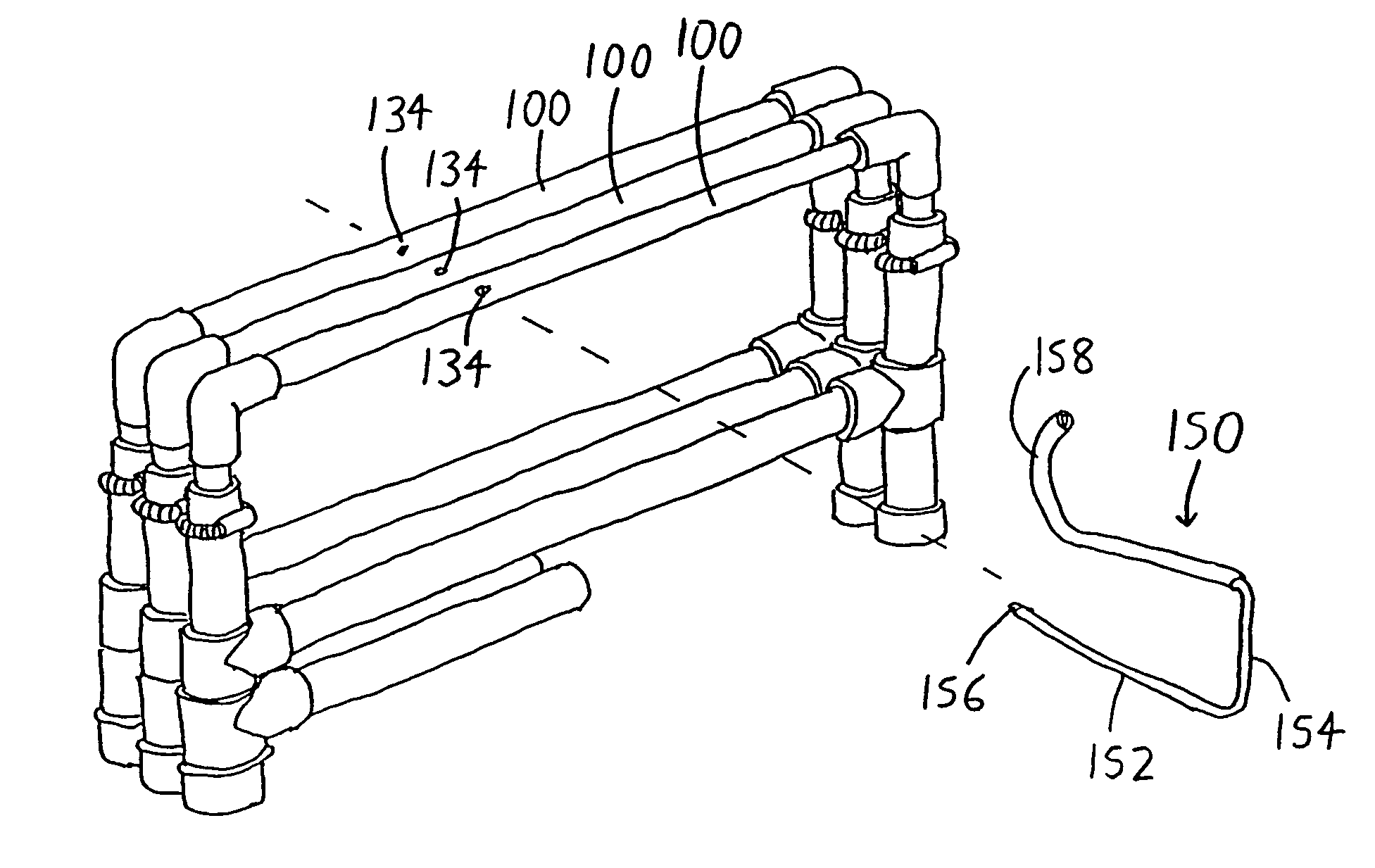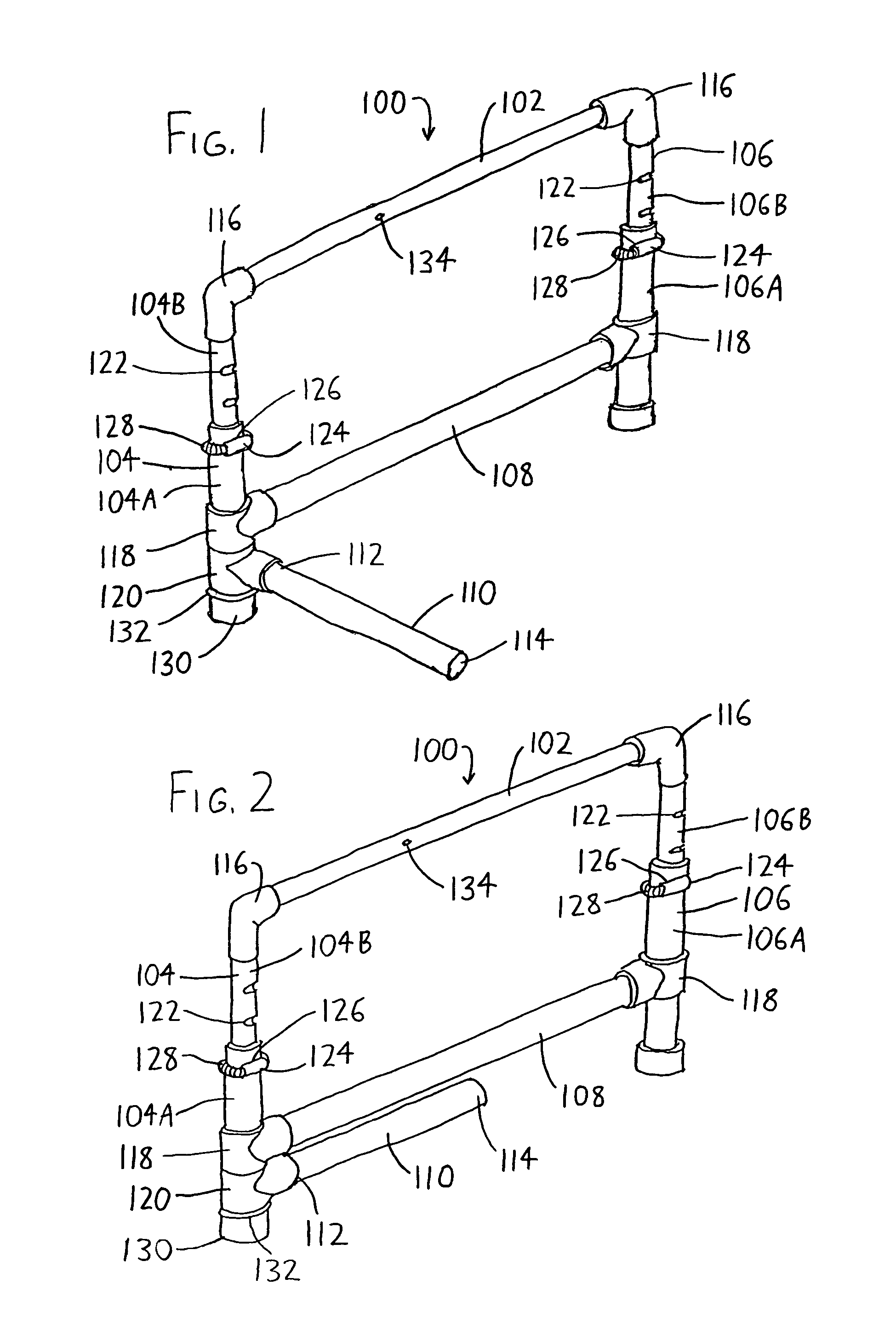Hurdle for sport and training use
a technology for athletic training and balls, applied in the field of balls for sports, athletic training, exercise and physical rehabilitation activities, can solve the problems of general dislike, increased injury, and suffering of balls, and achieve the effect of convenient collection and carrying
- Summary
- Abstract
- Description
- Claims
- Application Information
AI Technical Summary
Benefits of technology
Problems solved by technology
Method used
Image
Examples
Embodiment Construction
[0015]Referring initially to FIG. 1, an exemplary preferred version of a hurdle is designated generally by the reference numeral 100. The hurdle 100 includes an upper crossbar 102, a first strut 104 descending from one of the ends of the crossbar 102 (with this first strut including a first strut member 104A which telescopically receives a second strut member 104B), an opposing parallel second strut 106 (which similarly includes a first strut member 106A and a second strut member 106B), a lower crossbeam 108 bridging the first and second struts 104 and 106, and a lower support leg 110 having an inner leg end 112 affixed to the first strut 104 and an outer leg end 114 at its opposing end. The crossbar 102, first and second struts 104 and 106, crossbeam 108, and support leg 110 are preferably all formed of lightweight materials, and may be readily constructed from plastic pipe (e.g., furniture-grade PVC tubing, which has fillers omitted during its manufacture to avoid the brittleness ...
PUM
 Login to View More
Login to View More Abstract
Description
Claims
Application Information
 Login to View More
Login to View More - R&D
- Intellectual Property
- Life Sciences
- Materials
- Tech Scout
- Unparalleled Data Quality
- Higher Quality Content
- 60% Fewer Hallucinations
Browse by: Latest US Patents, China's latest patents, Technical Efficacy Thesaurus, Application Domain, Technology Topic, Popular Technical Reports.
© 2025 PatSnap. All rights reserved.Legal|Privacy policy|Modern Slavery Act Transparency Statement|Sitemap|About US| Contact US: help@patsnap.com



